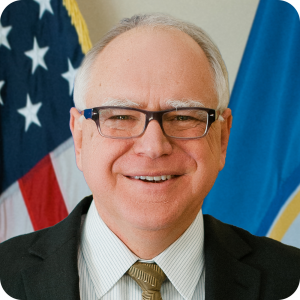11-13 COVID-19 Update from Governor Walz & the MN Department of Health
MN Governor Walz Announces Next Steps in State’s Response to COVID-19

Read – COVID-19: MN Governor Walz Announces New Measures
Friday, November 13, 2020, Governor Tim Walz participated in the Minnesota Department of Health (MDH) press call to provide updates on Minnesota’s response to COVID-19 as the virus surges across Minnesota and the Midwest.
Governor Walz Announces Next Steps in Response to COVID-19:
- New restrictions on bars, restaurants and private gatherings begin Friday.
- For Minnesotans, “It’s very challenging right now.” “It’s not a lot of good news,” but “we can control our destiny.”
- Took 7 months for first 100,000 cases, took 7 weeks to add another 100,000 cases, expects it could take 3 weeks to add another 100,000 cases.
- Mentioned a 21-year-old who died of COVID-19 today with no underlying health conditions.
- MDH Commissioner Jan Malcolm couldn’t share any more details due to HIPAA, but says it’s “certainly tragic.”
- “It’s time to suck it up and get through this,” said Walz.
- “It’s now easier than ever to get tested,” Walz said.
Department of Health Commissioner Jan Malcolm:
- Globally, 52.8 million cases since start of pandemic (up 600,000); 1.3 million deaths (up 8,860)
- In U.S., 10.5 million cases since pandemic began (up 153,00); 242,000 deaths (up 628)
- In Minnesota, 207,339 confirmed cases (up 5,552)
- In Minnesota, 2,839 total deaths (up 46)
- The 46 newly reported deaths is second highest one-day total.
- 34 of the 46 deaths were residents at long-term care facilities
- Previous daily high was 56 deaths reported on Wednesday, Nov. 11.
- COVID-19 claimed more Minnesotans this week than in any week of the pandemic.
- Hospitalizations reached 1,424, a new high, 293 in ICUs, also a high.
- Minnesota Department of Health starting new program on Monday to send text messages to people who test positive for COVID-19. Text will let people know that a phone call is coming.
- Believes this will prevent phone scams.
- MDH believes this will help with case investigation and contact tracing.
- The state has also rolled out a mail-in saliva test program where results are made available in 24 to 48 hours.
Dr. Michael Osterholm, University of Minnesota
- “Our health care systems are literally being overrun,” said Osterholm.
- Osterholm appointed President-Elect Joe Biden coronavirus task force.
- The next 8-10 weeks will define where we’re going to be.
- The vaccine should be available in first quarter of next year. Urging country and Minnesota to hold on until that time.
Q&A Session and Notes:
- “Moving on a mask mandate sooner would have helped,” said Walz. Minnesota’s mask mandate went into effect July 25. Having 50 states operate differently and not having a nationally coordinated strategy hasn’t helped, he said.
- “We need national standards,” said Osterholm. “We have 50 governors who all have been left to their own.”
- “We’re still short testing across this country,” said Walz, but fairly confident in Minnesota’s capacity. Walz urging people to use tested correctly, such as 5-7 days after known exposure.
- Osterholm urges people to “bubble themselves” for two weeks before getting together for holiday gatherings. Otherwise, think seriously about virtual get-togethers. “This is our COVID year,” said Osterholm.
- Governor Walz’s executive order is 10 people or less for social gatherings and a limit of three households (that includes the host household)
- “It’s not just good enough to have the bed space, you need the workforce,” said Walz. Health care worker shortage as concerning to health officials as available bed space.
- Governor Walz said there’s no national calvary to assist in regional shortages.
- Minnesota nurses did assist with New York and parts of the Northeast early in the pandemic, Walz said.
- “[Health care workers] can’t continue to run marathons, they are simply mentally and physically exhausted” said Osterholm. “We also need to preserve these people for the months ahead.”
- On efforts bars and restaurants are doing to prevent spread: “The vast majority of these establishments are doing the best they can,” said Walz. But he added, “the problem with restaurants and bars is, it’s absolutely the worst environment in a pandemic that is spread by aeresols and people in close contact with one another.”
- “Aeresols do play an important role in the transmission of this virus,” said Osterholm. Says aeresolized spread depends on length of contact. CDC defines close contact as within 6 feet for cumulative total of 15 minutes next to some with the virus. “This is an evolving area,” said Osterholm. Says more likely to get virus with 6 feet, but “certainly doesn’t end there.”
- Infections are based on time of exposure and amount of droplets in the air, said Osterholm.
- The biggest thing to eliminate restrictions is upping our masking activity, said Walz.
- One of biggest areas of concern: indoor gathering activities with 18 to 35 years old, said Walz.
- “We’re still exploring long-term effects” of COVID-19, said Osterholm. Mentions seemingly healthy individuals dealing with long-term effects such as “brain fog.”
Brooklyn Center | Brooklyn Park | Champlin | Crystal | Golden Valley | Maple Grove | New Hope | Osseo | Plymouth | Robbinsdale | Rogers | Twin Cities | Wayzata


